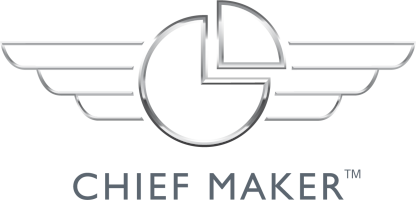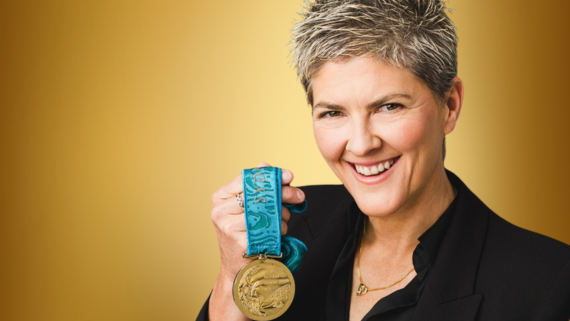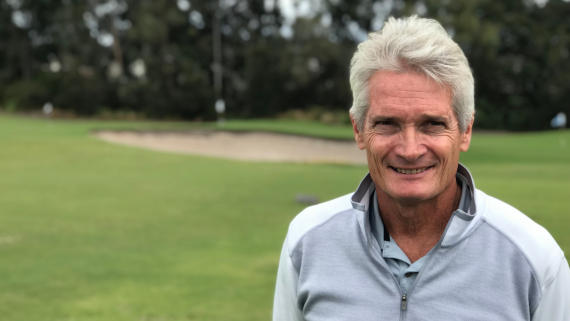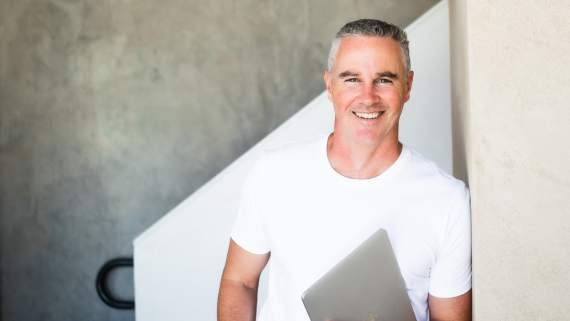
Subscribe to Spotify![]()
In this episode, we meet Liz Nicol, Co-Founder Safetyworks and Board Member on Leading Safety Change, 20 years of business ownership and how to get on a board.
Liz is Co-owner and Director of SafetyWorks Group, one of Australia’s foremost providers of safety culture change solutions for performance improvement.
She is a non-executive Director of Uniting and committee member of Hunter Region Committee of the AICD.
Liz is an experienced executive and non-executive director, who is determined to improve the lives of others, particularly in the area of safety and wellbeing, and those who are vulnerable in our community.
She is a Graduate of the Australian Institute of Company Directors, previous Chair of Leapfrog Ability, and Board member of St Philips Christian Education Foundation.
In this episode we talk about:
- How she got into the industry and the experience she has gained in 20 years of business ownership;
- Leading Safety Change, developing a chronic sense of unease and where leaders get it wrong;
- Why metrics are not useful if they don’t drive the behaviours that align to your business strategy and vision; and
- How to get on a board and how to make the most of non-executive positions.
Connecting with Liz Nicol
You can reach Liz on LinkedIn.
Books and resources mentioned in the episode
- Safe By Accident – by Aubrey Daniels and Judy Agnew
- Radical Candour – by Kim Scott
- Setting the Tone from the Top – by Melinda Muth and Bob Selden (AICD)
- Deepwater Horizon (movie)
“As you can imagine, day in, day out in accident emergency we spent time looking after people who'd been involved in a myriad of incidents, either at work or at home but there was also many who came following attempted suicide. Which was incredibly heartbreaking and being with those people at those most vulnerable moments of their life is an absolute privilege.”
On the evolution of her business
- If I go back to my nursing days, I spent a lot of my time working in accident and emergency and that gave me a real insight into that concept of prevention. I was doing some contract work so more and more people were asking me to do that. And I suddenly found myself with a whole bunch of clients and not quite enough time to manage it.
- Kerry, my now business partner, was an engineer and working as a safety superintendent at the time of closure of BHP in Newcastle. She came to me and said, “Look I'm really thinking about starting a business in health and safety, are you interested?” And I said, “Well I've got all of these clients and I think that we could do really well together.” So that's in essence how we started the business.
- I think first and foremost it was really about being young moms with toddlers, juggling that whole idea about having young children. Splitting your time between what was a very fast growing business and making sure that we were doing that in a really strategic way, and managing the children at the same time. So I think that that was quite significant for us in terms of learning a whole lot of skills at that very early stage.
On her experience of 20 years of business ownership
- And then probably the other aspect of business is that it's cyclical and it's ups and downs and it can be very tough at times. It can be tough when you haven't got enough work and you're out there trying to generate more work. And it can also be tough when you've got too much work and not enough people to do it and the amount that it requires of you at those times.
- We had a time, probably maybe 10 years ago where we had quite a significant downfall in terms of sales. And it was to do with the fact that we were doing a lot of work with one organisation and they were bought by someone else who decided they didn't need our services so it was that lesson, putting your eggs in one basket. Yeah so at that point in time it was a really important decision making time where we had to think what do we do here? Do we cut back our team who are an incredibly valuable group of people who are highly experienced, who we knew we couldn't replace easily.
- And also if you cut back your team you don't have services to offer, as what you would need in order to turn it around. Or do you dig in deep, you invest in it and back yourself basically?
On how valuable mentors and advisors have been
- One is it's having some trusted advisors around you, those people that you can talk through your thinking, testing it and really understanding that the decisions that you're making have been tested and are appropriate.
- It's also the courage to act and the courage to act quickly. If I'm honest, one of the things that I probably do is delay those decisions from time to time because I want to make sure it's absolutely right and I think there's a good lesson there to learn, that it's about making that decision, backing it and trusting that you're making the right decision and following through with it.
- The reality is, is that almost always the decision is right and if it's not right then there's something to be learned from it. And I think it's having that sense of optimism that you're doing the right thing and that you can make things work out. I think that's been fundamental to decision making for me.
On Leading Safety change – the good, bad and ugly
- I think that most leaders are doing what they think is right and many are doing great things, but I think what can be missing from their thinking is that they might not quite fully understand the importance of all of the factors impacting safety and wellbeing. Everything including behaviour, cognitive thinking, culture and systems all play a part in safety and wellbeing in an organisation.
- There's that idea of hubris, “We're doing pretty good here so we can relax a little bit.” And I think that that can sometimes bring leaders undone. And probably not understanding the real cost of deficient safety and wellbeing, that idea that … there's a strong connection between safety and wellbeing, productivity and efficiency and if we don't properly appreciate those things then you might not be able to actually leverage the improvements across all of those aspects.
- I think many leaders fail to see the real critical role that leadership plays in culture change. That idea that it's somebody else's responsibility and not really recognising how their own safety-related behaviours influence others. Everything from leaders using their mobile phone while they're driving or working crazy hours and travelling, or dodging traffic when walking along the road. They are all symbols to other people about what they think about safety and people will follow that.
- And probably the other area I would say is failing to be authentic. Failing to genuinely believe it's right for people in their organisations. So I think there are a range … and probably the other one that is quite significant is not recognising that people are your solutions. That people in the workplace … so those that know the work and know really what's going to bring them undone and how to do things safely.
- I think any activities that advocate what is possible for the future are really powerful. The concepts of appreciative inquiry around discovery and dreaming about what is possible, I think the things that are built around that are really quite influential. I think nothing's more powerful than a leader who will authentically incorporate safety and wellbeing into everything they say and do.
- I think them being out and about. Looking for and celebrating successes in safety and wellbeing. Finding teams who have come up with ideas for improving safety in their areas. Where safety conversations are happening regularly. Looking for and sharing learnings about incidents and hazards.
- I think also incorporating safety and wellbeing successes into all your opportunities for communication. So if you're an organisation that does videos or vlogs or Yammer or whatever, that you look for opportunities to talk about what is going well because that idea that we can build on what's working well is really quite critical.
On the pitfalls of incorrect metrics
- Metrics are valuable to the degree that they inspire action and align to the organisation strategy and vision. So fundamentally if they're not creating a desire in your organisation to improve for the right reasons, and they don't align with the organization's strategy and vision then it's obviously not going to be very successful for you. And I think the reality is, is that metrics are critical for decision making. They help you identify where you've been successful, so knowing where to do more of something and they help around opportunities for improvement.
- So one of the traps that we see a lot of organisations falling into is relying solely on what we call lagging indicators. So lost time injury frequency rate and total recordable injury frequency rate. And when organisations do that, basically they're managing by looking in the rear vision mirror and I also often say, “I don't know of any other metric that is used in organisations that's essentially a measure of failure and also a measure of luck.”
- Organisations that we see that are mature and doing really well have a really strong mix of leading indicators. The lag indicators are there and they're part of the measures but the lead indicators, those things that inform you about what you're doing proactively to improve safety, and that could be anything from having quality conversations, sharing learnings, putting corrective actions in place. Those things that we know that are going to prevent injuries they're the organisation … that's right.
- We've been in many organisations where they've used lost time injury frequency rate as their measure and then there's rewards attached to it. So if you go a certain number of days of that … and so what people will do is they'll either hide the injuries or they won't report them.
- If you're going to have successful metrics they need to drive the behaviours that you want to have happening in your organisation. Those that are about prevention, not about avoidance of reporting.
On using chronic unease to lead an authentically safe workplace
- One of the things that worries me is that we repeat the mistakes of the past. The things that we've learned already.
- I often talk about that sense of chronic unease. The great case study that NASA did … was not NASA actually, that was taught on NASA following the Columbia space shuttle disaster around that, that can do organisation who were completely focused on getting into space and not seeing the small deviations that contributed to what ultimately resulted in that exploding and a number of people being killed.
- And they talk in that case study about having a sense of chronic unease, always looking for what could go wrong here? What could take you down and I think that's an important thing for people in organisations to be thinking. Not from a negative perspective but what is it that could actually go wrong and what are we doing about it?
- If you are doing safety in an inauthentic way, so you're not doing it in a way that actually is about bringing out the best in people, is about supporting people to be the best they can be, and the safest they can be and the healthiest they can be. If that's not your focus, if your focus is around ticking boxes and being compliant versus having a commitment, then yeah, it can easily look like it.
- But in an environment where it's authentic and it's about taking care of people genuinely and it's about focusing on the important things. So focusing on what could actually really impact people seriously in this organisation, I think that if you put those parameters around it, you can't get it wrong. But certainly if you take a compliance focus and tick box attitude, then it can easily get into a poor space.
On how to get on a board and how to make the most of non-executive positions
- It's really important that people understand one, what your role of a board member is, what their role is, a little bit like what I was talking about there, and being educated around that. So when I started thinking about a board role it was probably 12 to 15 years ago. I recognised that one aspect I really like is strategic thinking. And I also recognised that over the course of my life I wanted to be able to give back in some way to a community and I've got a strong social justice bent. So that's part for me why I wanted to be on boards and particularly for purpose boards.
- I think that for people thinking about a board career, one is that you do need to think about, well why do you want to be on a board? And what have you got to offer those boards in the future? So I think people can often think, “Well that's pretty easy gig. You sit around and have people provide you reports.” But it actually requires a real dedication of your time, a commitment in order to make sure that those obligations of the organisation are being met and that the organization's going in a purposeful direction.
- And then getting yourself educated. So for me, I did the company director's course with the Australian Institute of Company Directors, so that was a very well-developed programme to help you really understand your responsibilities as a board director. I also started off on reasonably small boards, voluntary boards contributing to some community-based or not for profits in the area that I live. So a number of smaller boards really helped me develop my skill sets. And over the period of time I then was able to take on a role of chairing so I developed those skills as well. I think that combination of thinking about why you want to do it, getting yourself skilled up, starting small and developing your skills are all quite important.
Final message of wisdom and hope for future leaders
- I think that first and foremost it's being humble and respectful of everyone. I think that everyone is on their own journey. Everyone has a right to be heard and to be listened to. So I think being humble and respectful of everyone, no matter what. And the other is to say yes. The reason that I've been able to do the things that I've done along my career is because when opportunities have come before me, I've been able to say yes and to step out of my comfort zone. It almost always works out and if it doesn't there's an opportunity for learning. So that would be my two critical messages for the world around me.
Stay epic,
Greg
MINI-MBA IN LEADING HIGH PERFORMANCE TEAMS
Limited spaces per intake







